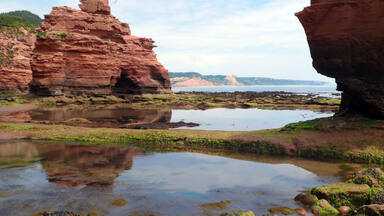World Wetlands Day 2023: It is time for Wetland Restoration
Celebrated annually on 2 February, World Wetlands Day aims to raise global awareness about the vital role of wetlands for people and the planet. This year’s theme: ‘It is time for Wetland Restoration’ - is in alignment with the UN Decade on Ecosystem Restoration.
Ecosystems support all life on earth. The healthier our ecosystems are, the healthier the planet - and its people. Taking this into account, the United Nations General Assembly proclaimed 2021–2030 the United Nations Decade on Ecosystem Restoration to call for the protection and revival of ecosystems all around the world, for the benefit of humanity and nature. It aims to halt the degradation of ecosystems and restore them as well as conserve the ecosystems that are still intact. Only with healthy ecosystems can we enhance people’s livelihoods, counteract climate change, and stop the collapse of biodiversity.
Everglades National Park (United States of America) is one of the largest wetland restoration projects in the world. The Everglades National Park was inscribed on the UNESCO World Heritage List in 1979 for its vast tropical wetlands. Yet this magnificent ‘river of grass’ represents only half of the historic Everglades ecosystem, following a century of agricultural and urban development. In recognition of the need to restore the Everglades ecosystem, the United States requested that the site be added to the List of World Heritage in Danger. With the guidance of UNESCO and IUCN, a multi-decade plan was developed to restore the natural flow of water via an extensive network of canals, levees, pumps and water control plans. So far, the world’s largest ecosystem restoration project has already benefitted from billions of dollars of investments. Most recently, an additional 1,1 billion USD was provided for Everglades restoration.
World Heritage Wetlands like the Everglades are also currently protected under additional designations, such as the Ramsar Convention on wetlands. Currently almost 100 UNESCO World Heritage wetlands are overlapping wholly or partially with over 150 Ramsar sites. Through inscription, UNESCO World Heritage sites benefit from synergies such as Ramsar and networks working together for conservation. For example, Saryarka – Steppe and Lakes of Northern Kazakhstan, a UNESCO World Heritage site also designated under the Ramsar Convention, is home to the critically endangered Saiga, a migratory antelope protected both under CITES (Convention on International Trade in Endangered Species of Wild Fauna and Flora) and CMS (Convention on the Conservation of Migratory Species of Wild Animals). Watch this video narrated by Ms Alyona Krivosheyeva of the Association for the Conservation of Biodiversity of Kazakhstan to learn more about how these Biodiversity Conventions protect Saryarka – Steppe and Lakes of Northern Kazakhstan.
While the World Heritage Convention’s one-of-a-kind international mandate facilitates the protection of UNESCO World Heritage wetlands belonging to us all, such as the Everglades National Park and Saryarka – Steppe and Lakes of Northern Kazakhstan – these ecosystems still face many threats.
Estimates suggest that wetland loss since 1700 may actually be as high as 87 per cent. The world’s remaining wetlands are also affected by multiple conservation challenges, including major infrastructure projects, intensive agriculture, invasive species, climate change impacts and pollution, to name a few.
UNESCO World Heritage wetlands are the most outstanding on earth but despite their iconic status, the irreplaceable crucial functions of wetlands require us to continue protecting them for current and future generations to come. Learn more about our work to protect UNESCO World Heritage wetlands in the World Heritage Review issue on Wetlands.


